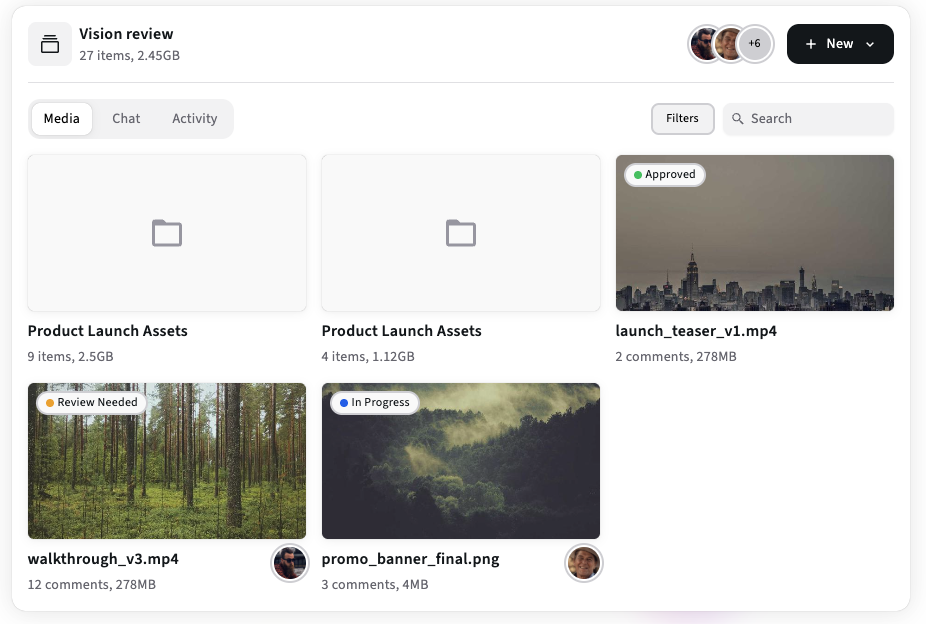The Ultimate Guide to File Transfer & Cloud Sharing for Video Teams
Everything video teams need to know about transfers and cloud sharing - protocols, tools, costs, integrity checks, automation, and a fail-safe playbook for deliveries and reviews.

Transfers are the plumbing behind every successful deliverable
Moving media files reliably is one of the boring but mission-critical parts of video production. Miss a deadline because a transfer failed, and nobody remembers the great edits - they remember the missed delivery. This guide explains the tools and patterns that ensure secure, reliable, auditable transfers and smooth cloud sharing for reviews and delivery.
Quick TL;DR
Use managed transfer (accelerated protocols) for TB-scale ingest/delivery.
Use resumable uploads for contributor/browser uploads.
Use short-lived presigned URLs and strong ACLs for direct cloud uploads.
Separate transfer (move the master) from sharing (host proxies for review).
Automate proxy generation and handoffs so reviewers don’t wait.
Key concepts
Transfer vs Share
Transfer = reliable movement of big masters (often one-off), with integrity checks and high throughput.
Share = ongoing access, streaming proxies, comments, and versioned review.
Resumable uploads
Avoid re-starting multi-hour uploads. Use protocols that resume where they left off.
Integrity & checksums
Always verify MD5/SHA checksums after transfer before archiving or deleting local copies.
Audit trails & receipts
For commercial or broadcaster deliveries, keep transfer reports, timestamps, and delivery receipts for invoicing and dispute resolution.
Tools & providers
MASV - fast pay-as-you-go large-file transfer. Great for one-off TB deliveries and contributor portals.
Signiant - enterprise accelerated file movement & SaaS. Ideal for scheduled pipelines and media companies.
Backblaze B2 - cost-effective cloud object storage for archives and incoming buckets. Use it as an archive + cheap restoration pipeline.
Cloudflare R2 - low-egress object storage alternative (good for avoiding egress surprises). Helpful when you expect heavy outbound delivery to global recipients.
Kreatli (project workspace) - centralize proxies, comments, approval records and share review links. Use Kreatli to host proxies and manage approvals after transfers complete.
Note: For studios with enterprise SLAs combine Signiant or an Aspera deployment (Aspera is IBM — used in other posts) with a cloud archive.
Transfer patterns & recommended architectures
Pattern A - TB-scale ingest (on-set or vendor → post)
Use an accelerated transfer tool (MASV/Signiant).
Upload into a secure cloud bucket (Backblaze B2 or R2).
Trigger a serverless job to generate proxies and populate the review workspace.
Notify editors and reviewers with a project link (Kreatli) that points at proxies, not masters.
Why: This pattern separates the heavy transfer (which is resilient and audited) from review playback (which is optimized for streaming and comments).
Pattern B - Contributor/browser uploads (many small/medium files)
Generate a short-lived presigned URL on the server and return it to the browser/client.
Use a resumable upload library (tus or vendor SDK) to avoid full re-uploads on interruptions.
On completion, verify checksum and auto-create proxies for review.
Why: Presigned URLs keep credentials off the client and resumable uploads avoid wasted time on flaky consumer connections.
Pattern C - Final delivery to broadcaster/client
Confirm delivery specs (container, codec, LUTs, checksums).
Use an enterprise transfer (Signiant or MASV depending on the recipient requirements).
Provide a signed delivery receipt and keep a copy in long-term archive (Backblaze B2 or cold tier).
Security & compliance best practices
Enforce TLS for all transfers and at-rest AES-256 where possible.
Use short-lived presigned URLs for direct uploads and downloads.
Log transfer events: who uploaded what, when, from which IP (use provider transfer reports).
Watermark sensitive review copies; keep masters access-limited.
Use role-based access and SSO for production accounts.
Cost considerations & egress modeling
Storage costs are predictable; egress is where surprises happen. Evaluate monthly egress for expected deliveries.
MASV is pay-per-transfer; Backblaze B2 is cheap storage but you’ll pay for downloads or data retrieval depending on the tier.
Consider Cloudflare R2 if you need predictable low-egress costs for frequent outbound streaming.
Automation: the time-saver
Trigger proxy creation automatically when a transfer finishes (webhooks).
Auto-notify reviewers and attach the review link to the project workspace with expected deadlines.
Auto-tag assets with ingestion metadata so MAM or search works from day one.
Developer checklist
Expose an endpoint to sign presigned upload URLs with minimal TTL and allowed operations.
Use a resumable upload client in the browser (Uppy + tus) when handling user uploads.
Validate checksums server-side and store them with the object metadata.
Hook transfer-complete webhooks to start proxy jobs and webhook into the project workspace (Kreatli) to populate the review item.
Playbook: one-week pilot
Goal: validate ingest → proxy → review → delivery chain on one typical project.
Day 1: Configure transfer endpoint (MASV or Signiant) and a test Backblaze bucket.
Day 2: Transfer a 100 GB master into the bucket; verify checksums and transfer report.
Day 3: Auto-generate proxies and push to Kreatli project workspace; invite reviewers.
Day 4–5: Collect comments and one revision cycle via the proxy player.
Day 6: Deliver final master to client via MASV; collect delivery receipt.
Day 7: Review costs, failed transfers, and reviewer friction; document improvements.
FAQ
Q: When should I choose MASV vs Signiant?
A: MASV is great for pay-as-you-go one-offs and contributor portals. Signiant fits enterprise pipelines needing scheduled, managed workflows and deeper integrations.
Q: Are presigned URLs secure enough?
A: Yes when you enforce short TTLs, restrict methods (PUT vs GET), and log usage. They limit credential exposure by design.
Q: Can I automate proxy generation for any file type?
A: Most cloud transcoding pipelines support common codecs. Confirm your transcode provider supports your camera codecs or add a transcode step in your ingestion pipeline.
Conclusion
Reliable transfers are a system: protocols, storage, automation, and review workflows working together. Use managed transfer for masters, resumable uploads for contributors, automatic proxy generation for reviews, and a project workspace (Kreatli) to keep everything connected. Run the one-week pilot above and you’ll quickly see how much time automation and the right transfer pattern save your editors and producers.
Start a Free Kreatli Project
